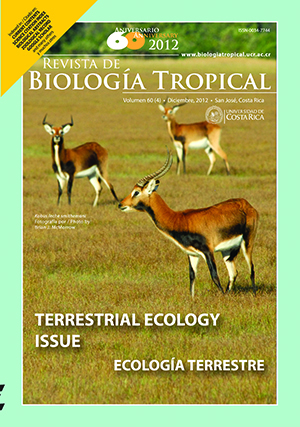Abstract
Stomolophus meleagris fecundity (Rhizostomeae: Stomolophidae) in the Gulf of California. The cannonball jellyfish Stomolophus meleagris is regarded as a fishery resource with high commercial value, but with scarce biological information. With the aim to generate preliminary information on reproductive aspects, the present study analyzes its fecundity, based on the estimated number of vitellogenic oocytes in the gonad; in addition, we evaluated its relationship with the jellyfish body length, diameter and wet weight; and we established the relationship of the gonadosomatic index (IGS) with the jellyfish diameter and length. For this, a total of 30 specimens were collected, measured and weighed in a monthly basis, in Las Guásimas lagoon from January to May 2006. In order to estimate the gonad volume, 60 mature females were analyzed and their gonads were extracted and stained with hematoxylin-eosin. Gonad images from histological preparations were analyzed and the number of vitellogenic and previtellogenic oocytes obtained. We used catch data from The Guásimas for population recruitment analysis, that was estimated with FISAT II. Among results, we found that fecundity increased with jellyfish length, diameter and total wet weight. The lower fecundity rates occured on February and the highest during May (11 873 071 and 37 528 197 millions of vitellogenic oocytes per gonad, respectively). The IGS increased with length and diameter of the specimens, at its maximum value of 3.7% was observed in May. A continuous production of previtellogenic oocytes were observed during the full collection period. The maximum recruitment was observed in July and November (37.50% and 28.01% respectively). The high fecundity observed in S. meleagris, suggests a high population reproductive potential that may support the possibility of an important fishery consolidation on this jellyfish.##plugins.facebook.comentarios##

This work is licensed under a Creative Commons Attribution 4.0 International License.
Copyright (c) 2012 Revista de Biología Tropical
Downloads
Download data is not yet available.


